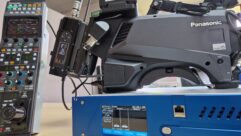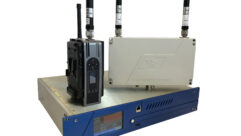
Sigma Electronics VDA26
Peer Reviewed by William Nayor: Sigma Electronics VDA26 composite video distribution amplifier; Price: $270 MSRP
Peer Reviewer: William Nayor, owner, Mill City Teleproductions, Manchester, NH. Mill City Teleproductions is a multi-camera video production company specializing in New England-area concerts, sporting events, and stage plays for broadcast/distribution and IMAG since 1983.
Credit: aland
My Pick:
Sigma Electronics VDA26 composite video distribution amplifier, $270 MSRP
What I Like About It:
Two outstanding features of this handy, standalone, compact 1×6 composite video distribution amplifier (VDA) are its ruggedness and reliability. The Sigma Electronics VDA26 is the size of a medium-thickness paperback book. Besides being light and portable, three of these units will mount side by side in an optional factory rack frame.
I particularly like the amplifier’s all-metal construction, which helps shield against stray EMI/RFI leakage — a common nuisance with the SMPS (switch mode power supply) on older light dimmer packs. I also prefer the professional-grounded, three-wire AC cord instead of the wall-wart system.
I Would Change:
About the only thing I could ask for would be to add an auto-terminating 75-ohm looping input to the VDA26. Some other units require sliding a switch to terminate, while this model requires the user to add a BNC-type terminator to be manually connected for proper loading of the signal if you’re not going to loop it.
Where I Used It:
I frequently use the Sigma Electronics VDA26 for concerts at the Meadowbrook Musical Arts Center in Gilford, NH.
My Results:
MANUFACTURER SPECIFICATIONS
Inputs: (1) Hi Z, looping, AC coupled
Level: 1.4 V p-p max.
Return Loss: 35 dB min. at 5 MHz
Gain Range: + 4 dB
Connectors: BNC
Outputs: (6) 75 ohm, source terminated
Bandwidth: 150 MHz
Differential Phase: 0.1 max. 10 percent to 90 percent APL
Differential Gain: 0.1 percent max. 10 percent to 90 percent APL
Tilt: 1 percent maximum
Freq. Response: + 0.5 dB to 50 MHz
Return Loss: 35 dB min at 5 MHz
With this rugged DA, AC cord wrapped around it, and riding in the bottom of the cable box, we usually arrive early at the Meadowbrook Musical Arts Center in Gilford, NH, and start setting up by duct taping the unit securely to the supports in the sound booth.
Christie projectors hang from above the pavilion’s framework approximately 75 feet from the stage. We start by connecting our switchers’ composite video feed to the equalized (cable compensated) VDA (Sigma Model 100A).
That signal is amplified, traveling about 90 feet over RG59U quad-shielded cable. We found that this type of cabling is superior because each concert act brings its own lighting setup, and some of the older lighting controllers leak an excessive amount of EMI radiation.
Following the trail toward the VDA26, we monitor the waveform of color bars from the VDA’s output, and adjust the amplitude of the VDA for unity gain. When this is accomplished, the signal is then distributed to the hanging projectors. All of this takes place in the morning before an evening’s concert.
We’ve had excellent long-term satisfaction with the Sigma line of VDAs in our post-suite. They run 24/7, and only turn off when the power fails and always come back on when power is restored, with no micro processor resetting or manual intervention necessary.
The VDA26 we use on remotes takes all the abuse of rough handling, and always performs as advertised. There are so many electronic components that just have to work for a live performance. With its high signal quality and solid chassis, this is one small, important link in the video chain that will hold up under the lights.










